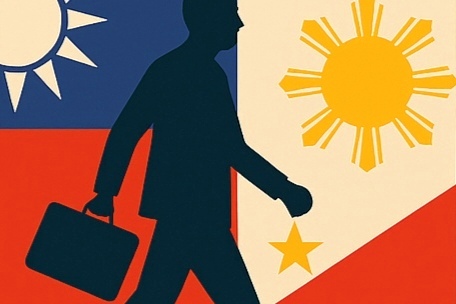Philippines loses competitive edge among Taiwanese investors
For a brief moment this year, the Philippines had something rare in the cutthroat world of trade policy: an edge over its Southeast Asian neighbors. When U.S. President Donald Trump rolled out his first volley of tariffs in April, Manila’s exporters got off relatively lightly with a 17% levy—less than half of what Cambodia and Vietnam faced. Taiwanese investors, quick to spot arbitrage in policy shifts, began flocking to Subic Bay and other freeports.
Then, in July, the United States yanked away that advantage. The rate jumped to 19%, putting the Philippines on the same footing as Indonesia, Thailand, and Malaysia. The change came days after President Ferdinand Marcos Jr. concluded his first bilateral with Trump in Washington—an encounter the U.S. president publicly spun as proof of Marcos’s tough negotiating skills. In reality, the Philippines agreed to maintain zero tariffs on U.S. imports while accepting an export rate just one percentage point shy of Washington’s original ask.
Marcos called that difference “a significant achievement.” But from an investor’s standpoint, the 19% figure is indistinguishable from the competition—and the political optics of hailing it as a win are hard to defend. The outcome is modest when compared to Japan, which secured a 15% rate alongside a major U.S. investment commitment.
The damage is already visible. “Most Taiwanese investors who had originally planned to visit or invest in the Philippines have now adopted a wait-and-see attitude, and some have even decided to cancel their investment plans,” said Chang Che-chia, chair of the Taiwan Chamber of Commerce in Subic Bay. Lin Teng-feng, who heads the Taiwan Association Inc Philippines, confirmed that some relocation plans are now on ice.
Supporters of the deal will note that key electronics exports are shielded by WTO rules, and former Philippine Tariff Commission commissioner George Manzano is right that product-by-product talks could still claw back some ground. But the hard truth is this: trade policy is as much about perception as it is about numbers. By settling for parity instead of pressing for a structural advantage, Manila squandered its moment.
If the government wants to reignite Taiwanese investor interest, it must fix the chronic deterrents that have long weighed on the Philippines: tangled bureaucracy, unstable power costs, and thin supplier networks. Without those changes, the country will remain a fallback option—viable, yes, but never first choice—while Vietnam and others run away with the prize.



0 Comment